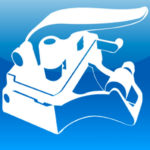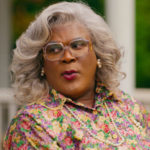Rodeo FX Breathes Life into Tarzan
October 17, 2016, 10:30 AM
https://www.aotg.com/rodeo-fx-breathes-life-into-tarzan/
Rodeo FX completed nearly 200 visual effects shots for The Legend of Tarzan, including action sequences with CG hippos and crocodiles, where realistic water interaction was critical for the success of the shots. The studio's VFX work helped lift these animal sequences to a level where they look like scenes from a nature documentary. This is the first major production on which Rodeo FX has created CG creatures, adding to its repertoire of VFX skills.
Directed by David Yates, and starring Alexander Skarsgård and Margot Robbie, Tarzan follows the title character, now living in London under the name Lord Greystoke, as he and his wife Jane return to the Congo on a government trade mission. When Jane is kidnapped, Tarzan returns to his roots to lead his animal friends on a rescue mission.
Rodeo FX created environments for the London set pieces, which involved 2D matte paintings, CG set extensions, and added CG vegetation. For scenes aboard a paddle steamer that were shot against a green screen, they stitched together background plates from a six-camera setup of scenery in Gabon. But it was the CG creature work that was the most challenging - and rewarding - aspect of the project.
Life-like Hippos and Crocs
Along with butterflies and leaf cutter ants, Rodeo FX created a pod of hippos, including one 'hero' hippo that attacks Jane, as well as a bask of crocodiles seen in the final sequence of the movie.
"Because we built our creature pipeline from scratch, we had a great opportunity to do it right without legacy tools or workflows," said Mikaël Damant-Sirois, CG supervisor at Rodeo FX.
Yates, along with his production VFX supervisor, Tim Burke, wanted the hippos and crocs to look aggressive and daunting, taking their cue from real animals filmed in documentaries. Visually, the animals were based on references of specific species of hippos and crocodiles and the team at Rodeo FX had complete freedom to develop the narrative aspects of these creature scenes.
Rodeo FX built skeletons and muscle rigging, skin, fur, and scales for the animals. Each individual animal was altered to provide contrast in such details as the crocodile scales, skin textures, and unique marks.
Rigging Creatures
The rigs were tested through animation cycles based on reference footage of movements the animals would make in the wild. These included resting on land and in water, walking, running, swimming, and fighting, during which textures and shapes would be pushed to the extreme and needed to maintain their realistic look.
"The main hippo, which is shown in close-ups, required a separate facial rig that allowed us to control all the separate parts of its face," said François Dumoulin, VFX Supervisor at Rodeo FX. "We had controllers for its eyes, which really brought it to life."
Water interactions
Yates and Burke did not want to use stand-in models for the live plates - the traditional technique to obtain interactions with water and other elements in the scene - but chose to make the animal shots completely CG.
"This meant we had to add interactive water and other elements to these scenes," said Dumoulin. "This made the work even more challenging."
Rodeo FX used FX simulation to depict the animals interacting with water, debris in the water, mud, and sand. They made generic water that would mimic large amounts of liquid, then integrated CG water back into the plates. The water references came from three sources: the water tank in Leavesden provided water with no current or turbulence; a river in England with a slow current and ripples; and plates from a river in Gabon that had fast currents and lots of turbulence.
"Tarzan was a milestone project for Rodeo FX. The intensive animal sequences allowed us to explore the combination of creature animation with FX work," said Sébastien Moreau, president of Rodeo FX. "The team did an amazing job meeting that challenge."
Over 200 VFX for Tarzan

Newest from AOTG.com
-

Daniel George McDonald on Editing Cheer's Season 2 Finale
Daniel George McDonald sits down to discuss creating the finale for Cheer Season 2.
-

Editing The Black Lady Sketch Show
Gordon sits down with the editorial team of The Black Lady Sketch Show to discuss their approach to ...
-

Philip White on Crafting A Madea Homecoming's Music
Gordon sits down with Philip to discuss his work with Tyler Perry and his latest film A Madea Homeco...
2012
ace
aes
aja
assistant
assistant editor
avid
blackmagic design
bordwell
chasing mavericks
cloud atlas
constructive
craig mckay
david mitchell
editing
editing chasing mavericks
editor
election
encoding
eric brodeur
fcpx
high frame rate
john gilbert
labor
lady and the tramp
lisa bromwell
media
memory card
mpeg
post magazine
protools
server
sharon smith holley
signiant
silence of the lambs
software
sony
sorenson
squeeze
stock
the sessions
thunderbolt
transcoding
union
workflow
Site Links
Tools
Sister Sites
© 2007-2025 www.aotg.com Ver. 3.0 All Content created and posted by Art of the Guillotine users Art of the Guillotine graphics, logos, designs, page headers, button icons, scripts, and other service names are the trademarks of Art of the Guillotine Inc. Use of this material outside of this site is strictly prohibited.